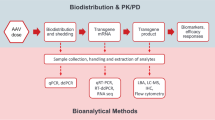Summary
N 2, N 4, N 6-Trihydroxymethyl-N 2, N 4, N 6-trimethylmelamine (Trimelamol) is a water-soluble synthetic s-triazine which, unlike hexamethylmelamine (HMM) and pentamethylmelamine (PMM), does not require metabolic activation. The physico-chemical characteristics of Trimelamol were studied with the aim of overcoming the problems of chemical instability, low solubility and polymerisation which had hindered the development of the drug for clinical use. Trimelamol had similar activity to PMM against the murine PC6 plasmacytoma, but enhanced activity with respect to PMM against the Walker 256 carcinosarcoma in the rat, a species which metabolises PMM less efficiently. Pharmacokinetic studies in mouse, rat and man did not show the major species differences characteristic of PMM. The drug exhibited similar toxicity to PMM against rodents, but had virtually no neurotoxicity. The potential advantages of Trimelamol over previously tested melamines are discussed.
Similar content being viewed by others
References
Ames MM, Powis G, Kovach S, Eagen RT (1979) Disposition and metabolism of pentamethylmelamine and hexamethyl-melamine in rabbits and humans. Cancer Res 39: 5016
Borkovec AB, DeMilo AB (1967) Insect chemosterilants V. Derivatives of melamine. J Med Chem 10: 457
Casper ES, Gralla RJ, Garrett RL, Jones BR, Woodcock TM, Gordon C, Kelson DP, Young CW (1981) Phase I and pharmacological studies of pentamethylmelamine administered by 24-hour intravenous infusion. Cancer Res 41: 1402
Connors TA, Jones M, Ross WCJ, Braddock PD, Khokhar AR, Tobe ML (1972) New platinum complexes with antitumour activity. Chem Biol Interact 5: 415
Connors TA, Cumber AJ, Ross WCJ (1977) Regression of human lung tumour xenografts induced by water soluble analogues of hexamethylmelamine. Cancer Treat Rep 61: 927
Cumber AJ, Ross WCJ (1977) Analogues of hexamethylmelamine. The anti-neoplastic activity of derivatives with enhanced water solubility. Chem Biol Interact 17: 349
Dixon WJ (ed) (1970) BMD Biomedical Computer Programs: X-series supplement. University of California Press, Berkely, p 177
Goldberg RS, Griffin JP, McSherry JW, Krakoff IH (1980) Phase I study of pentamethylmelamine. Cancer Treat Rep 64: 1319
Ihde DC, Dutcher JS, Young RC, Cordes RS, Barlock AL, Hubbard SM, Jones RB, Boyd MR (1981) Phase I trial of pentamethylmelamine: A clinical and pharmacologic study. Cancer Treat Rep 65: 755
Judson IR, Rutty CJ, Abel G, Graham MA (1986) Low central nervous system penetration of N2, N4, N6-trihydroxymethyl-N2, N4, N6-trimethylmelamine (Trimelamol): A cytotoxic s-triazine with reduced neurotoxicity. Br J Cancer 53: 601
Muindi JRF, Newell DR, Smith IE, Harrap KR (1983) Pentamethylmelamine (PMM): Phase I clinical and pharmacokinetic studies. Br J Cancer 47: 27
Rosenoer VM, Mitchley BCV, Roe FJC, Connors TA (1966) Walker carcinosarcoma 256 in study of anticancer agents. I. Method for simultaneous assessment of therapeutic value and toxicity. Cancer Res 26 (Part 2): 937
Rutty CJ, Abel G (1980) In vitro cytotoxicity of the methylmelamines. Chem Biol Interact 29: 235
Rutty CJ, Connors TA (1977) In vitro studies with hexamethylmelamine. Biochem Pharmacol 26: 2385
Rutty CJ, Connors TA, Nam NH, Thang DC, Hoellinger H (1978) In vitro studies with hexamethylmelamine. Eur J Cancer 14: 713
Rutty CJ, Newell DR, Muindi JRF, Harrap KR (1982) The comparative pharmacokinetics of pentamethylmelamine in man, rat and mouse. Cancer Chemother Pharmacol 8: 105
Rutty CJ, Newell DR, Muindi JRF, Harrap KR (1983) Development of potential clinical alternatives to hexamethylmelamine. In: Davis W, Maltoni C, Tanneberger ST (eds) The control of tumour growth and its biological basis. Academie Verlag, Berlin, p 180
Van Echo DA, Chiuten DF, Whitacre M, Aisner J, Lichtenfeld JL, Wiernik PH (1980) Phase I trial of pentamethylmelamine in patients with previously treated malignancies. Cancer Treat Rep 64: 1335
Worzalla JF, Johnson BM, Ramirez G, Bryan GT (1973) N-demethylation of the antineoplastic agent hexamethylmelamine by rats and man. Cancer Res 33: 2810
Worzalla JF, Kaiman BD, Johnson BM, Ramirez G, Bryan G (1974) Metabolism of hexamethylmelamine-ring-C14 in rats and man. Cancer Res 34: 2669
Author information
Authors and Affiliations
Additional information
This study was supported by grants from the Cancer Research Campaign, the Medical Research Council, and the National Cancer Institute, USA (no. 1-CM-43736). IRJ is in receipt of a CRC Research Fellowship
Rights and permissions
About this article
Cite this article
Rutty, C.J., Judson, I.R., Abel, G. et al. Preclinical toxicology, pharmacokinetics and formulation of N 2, N 4, N 6-trihydroxymethyl-N 2, N 4, N 6-trimethylmelamine (Trimelamol), a water-soluble cytotoxic s-triazine which does not require metabolic activation. Cancer Chemother. Pharmacol. 17, 251–258 (1986). https://doi.org/10.1007/BF00256694
Received:
Accepted:
Issue Date:
DOI: https://doi.org/10.1007/BF00256694




